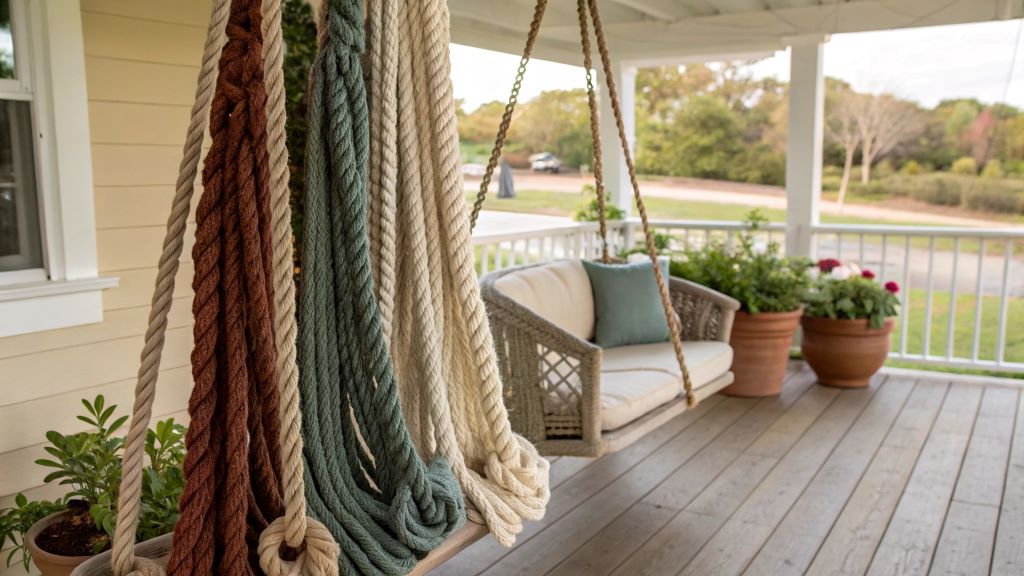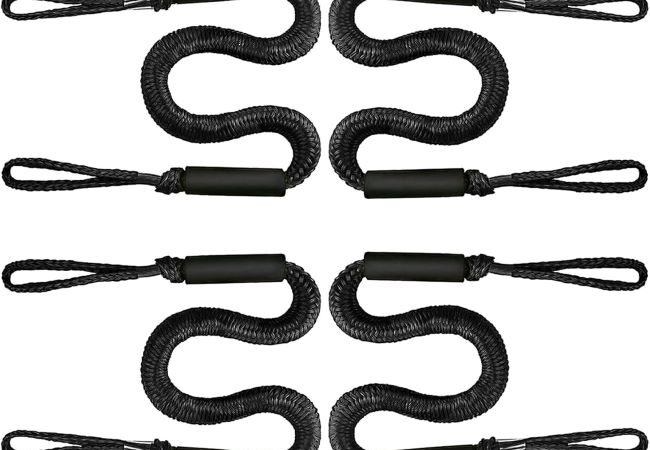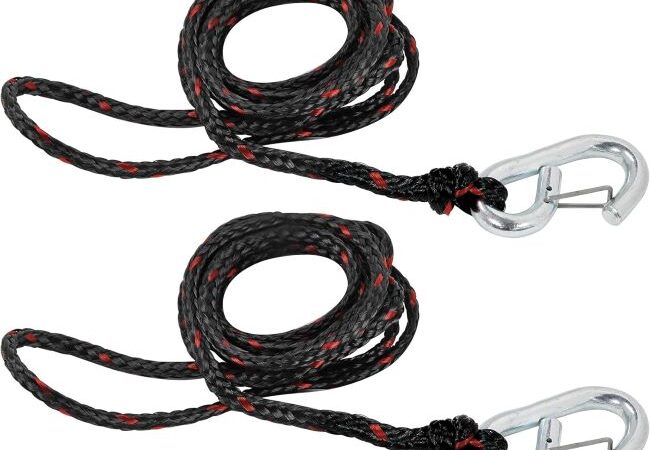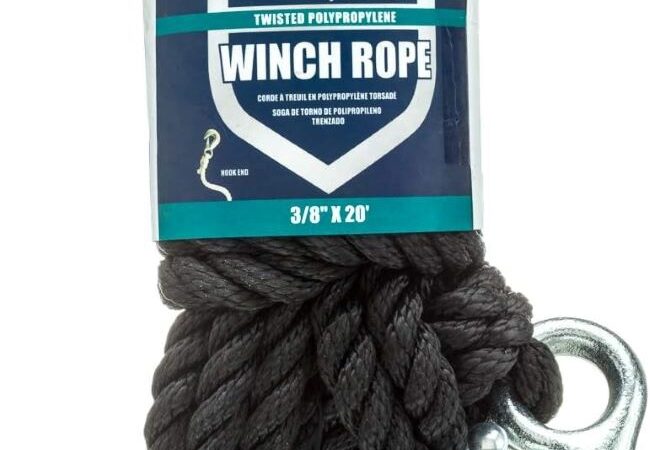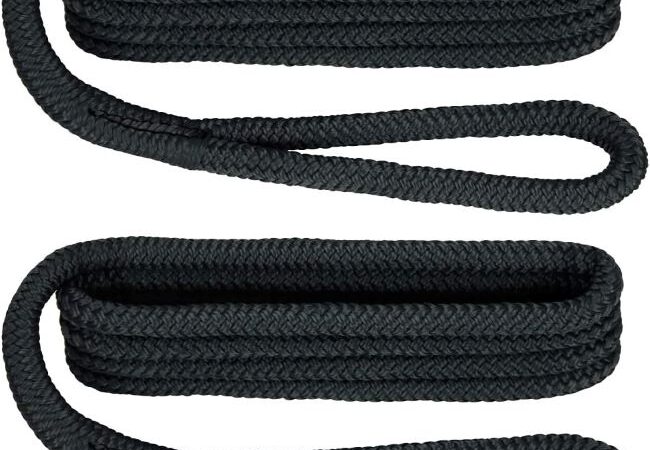
Swaying into Serenity: Choosing the Perfect Rope for Your Porch Swing
The gentle creak of a porch swing, the rhythmic sway, and the soft caress of a summer breeze – these are the quintessential elements of relaxation. But what anchors this idyllic scene? The rope. Often overlooked, the rope plays a crucial role in the safety, aesthetics, and longevity of your porch swing experience. Selecting the right rope is not just about functionality; it’s about crafting a haven of tranquility. This article delves into the intricacies of choosing the perfect rope for your porch swing, ensuring both safety and style.
Contents at a Glance
ToggleUnderstanding Rope Materials: Strength, Durability, and Aesthetics
The market offers a diverse array of rope materials, each with unique characteristics. Understanding these differences is paramount to making an informed decision.
-
Natural Fiber Ropes (Manila, Cotton, Sisal):
- These ropes exude a classic, rustic charm, perfectly complementing traditional porch designs.
- Manila rope, derived from the abaca plant, is renowned for its strength and durability, making it a popular choice for heavy-duty swings. However, it’s susceptible to rot and mildew in damp environments and can shrink when wet.
- Cotton rope offers a softer, more comfortable feel, ideal for leisurely swinging. It’s gentle on the hands and adds a touch of bohemian elegance. However, it’s less durable than manila and prone to wear and tear over time.
- Sisal rope, while strong, is relatively coarse and may not be the most comfortable option for prolonged use. It also deteriorates faster than manila in outdoor conditions.
- Natural fibers are generally less expensive than synthetic alternatives, but require more maintenance. They are more susceptible to the elements.
-
Synthetic Fiber Ropes (Polypropylene, Polyester, Nylon):
- Synthetic ropes are engineered for superior strength, weather resistance, and longevity.
- Polypropylene rope is lightweight, buoyant, and resistant to rot, mildew, and UV damage. It’s a budget-friendly option, but may not be as strong as other synthetic ropes.
- Polyester rope boasts exceptional strength, abrasion resistance, and UV stability. It maintains its shape and strength over time, making it a reliable choice for heavy-duty swings.
- Nylon rope is known for its elasticity and shock absorption, providing a smooth and comfortable swinging experience. It’s also highly durable and resistant to abrasion. However, it can lose some strength when wet and is more prone to UV degradation than polyester.
- Synthetic ropes often come in a wider variety of colors and styles, allowing for greater customization. They are generally more expensive than natural fiber ropes, but require less maintenance.
-
Specialty Ropes (Marine-Grade, Climbing-Grade):
- For those seeking the ultimate in strength and durability, marine-grade or climbing-grade ropes are excellent options.
- Marine-grade ropes are designed to withstand harsh saltwater environments, offering exceptional resistance to rot, mildew, and UV damage.
- Climbing-grade ropes are engineered for extreme loads and safety, providing unparalleled strength and reliability. These are overkill for most porch swing applications, but provide the greatest saftey margin.
Factors to Consider: Weight Capacity, Rope Diameter, and Installation
Beyond the material, several other factors influence the suitability of a rope for your porch swing.
-
Weight Capacity:
- The rope’s weight capacity must exceed the combined weight of the swing and its occupants. Always err on the side of caution and choose a rope with a higher weight rating than you anticipate needing.
- Consider the maximum number of people who might use the swing simultaneously.
- Factor in any potential dynamic loads, such as sudden movements or swinging with force.
- Check the manufacturers specifications for weight rating.
-
Rope Diameter:
- A thicker rope generally offers greater strength and stability.
- The diameter should be compatible with the swing’s hardware and the support structure.
- A comfortable grip is also essential, especially for prolonged use.
- A diameter of 1/2 inch to 3/4 inch is generally sufficient for most porch swings.
-
Installation:
- Proper installation is crucial for safety and stability.
- Ensure the support structure is strong enough to bear the weight of the swing and its occupants.
- Use appropriate knots and hardware to secure the rope to the swing and the support structure.
- Regularly inspect the rope and hardware for signs of wear and tear.
- Always double check your knots, and consider having a professional inspect your installation.
-
Aesthetics:
- The Rope color and texture should match your porch area.
- Natural ropes bring a warm feel, where as synthetic ropes can bring a modern feel.
- Consider the look of the knots used as part of the overall visual.
Essential Camping Rope for Secure and Adventurous Outdoor Expeditions!
People Also Ask (FAQs)
-
What is the strongest type of rope for a porch swing?
- Polyester rope is generally considered the strongest and most durable option for porch swings, offering excellent resistance to weather, abrasion, and UV damage. Climbing grade ropes, while extremly strong, are generally overkill.
-
How often should I replace my porch swing rope?
- The lifespan of a porch swing rope depends on the material, exposure to the elements, and usage. Natural fiber ropes may need to be replaced every few years, while synthetic ropes can last much longer. Regularly inspect the rope for signs of wear and tear, such as fraying, discoloration, or weakening.
-
Can I use a regular rope for a porch swing?
- While you can technically use any rope, it’s crucial to choose a rope specifically designed for heavy-duty applications and outdoor use. Regular ropes may not have the necessary strength, durability, or weather resistance.
-
How do I prevent my porch swing rope from fraying?
- To prevent fraying, use appropriate knots and hardware, and avoid sharp edges or abrasive surfaces. Regularly inspect the rope for signs of wear and tear, and replace it if necessary. You can also apply a protective coating or sealant to the rope to enhance its durability.
-
What is the best knot to use for a porch swing rope?
- Several knots are suitable for porch swing ropes, including the bowline knot, the figure-eight knot, and the double fisherman’s knot. The bowline knot is particularly popular due to its strength and ease of tying.
-
How much weight can a porch swing rope hold?
- This depends on the rope type, and diameter. Always check the manufacturer specifications. It is always better to over engineer the rope strength used.
-
Are synthetic or natural ropes better for a porch swing?
- Synthetic ropes are generally better for outdoor porch swings due to their increased durability, and resistance to weather. Natural ropes provide a classic look, but require more upkeep.
Conclusion: Swinging Towards Informed Choices
Selecting the right rope for your porch swing is an investment in safety, comfort, and aesthetic appeal. By understanding the characteristics of different rope materials, considering essential factors like weight capacity and installation, and addressing common concerns, you can create a swinging sanctuary that brings joy and relaxation for years to come. Remember, the rope is more than just a functional component; it’s an integral part of the porch swing experience. Take the time to choose wisely, and you’ll be rewarded with countless moments of serene swaying and lasting memories.
Read More:
Rope Dart: The Ultimate Guide for Mastering this Unique Martial Art Weapon

